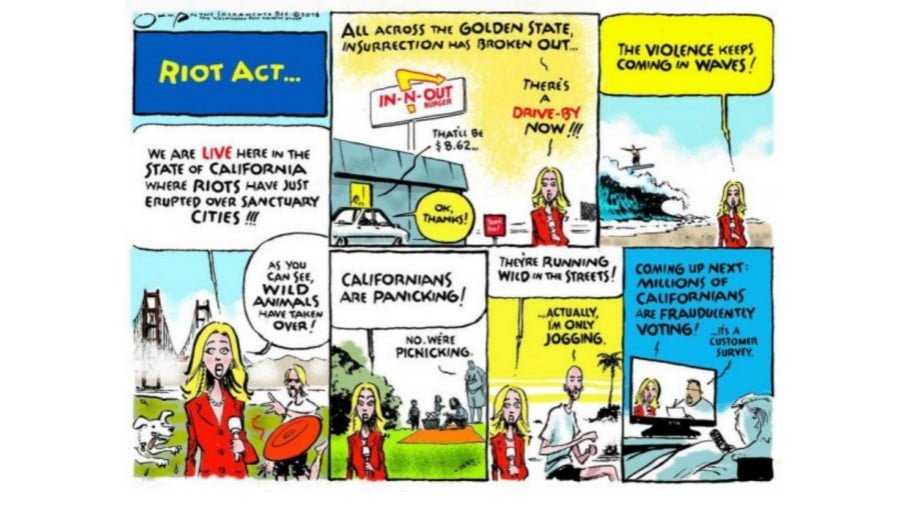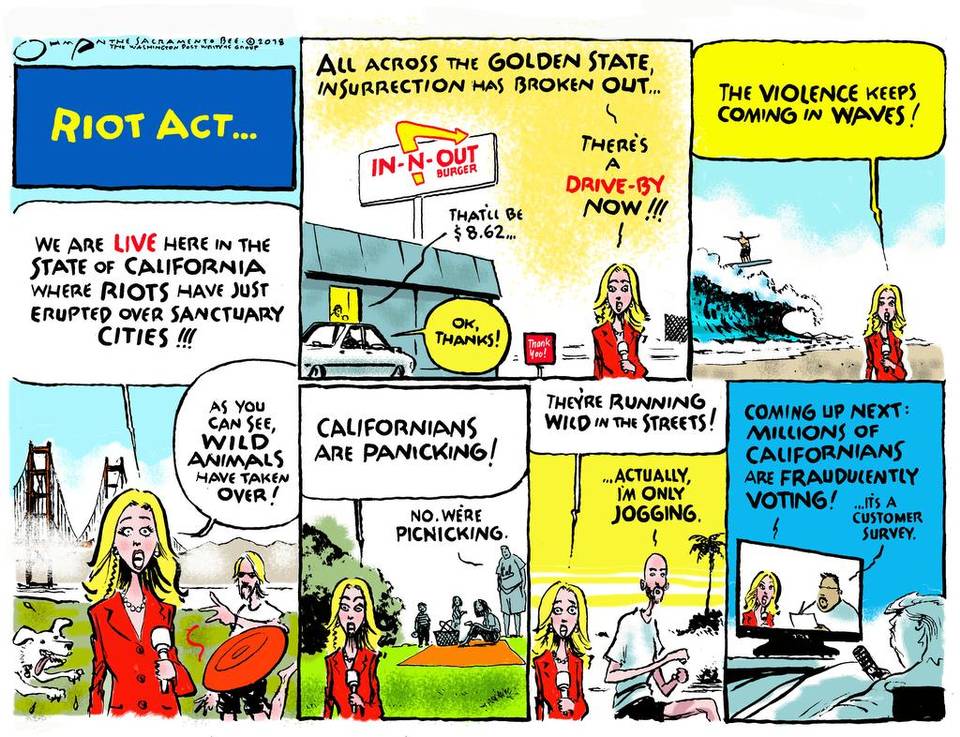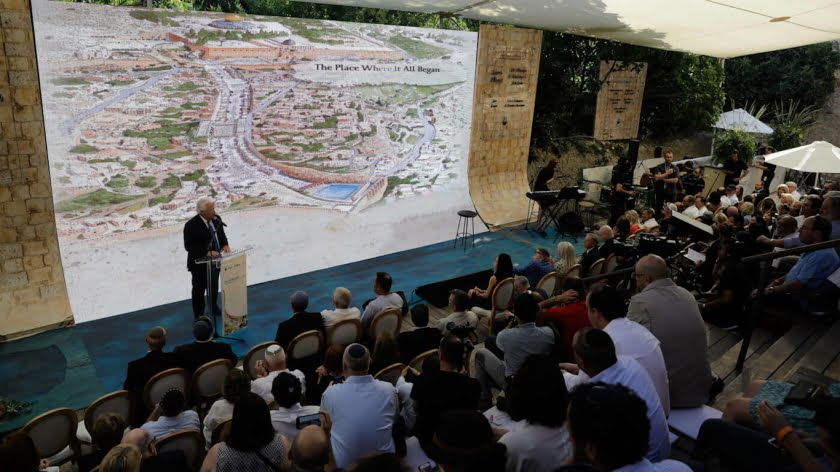Racial Politics in America and in California
I wasn’t closely following the midterm elections campaign, but the results seemed to be about as expected for Donald Trump and the Republicans. With some races still undecided, the Democrats will apparently pick up close to 35 House seats, giving them solid control, and also a half-dozen governorships, while losing at least a couple of Senate seats. These overall Democratic gains seem roughly what might be expected for the first midterm after a Republican presidential victory, but nothing at all like the “blue wave” that had seemed possible a few months earlier, before the bitter public battle over the Kavanaugh Supreme Court nomination greatly re-energized the Republican base.
Perhaps the loss of the House may actually prove to be a mixed blessing for Trump. Democrats will achieve control of all the investigative committees and their accusations and subpoenas will make Trump’s life even more miserable than it was before, while surely removing any chance that significant elements of Trump’s remaining agenda will ever be enacted. However, although Trump had reached the presidency by advocating a radical populist-nationalist agenda, he has hardly governed in those terms. For his first two years in office, he sunk nearly all his political capital into enacting huge tax cuts for the rich, wholesale Wall Street deregulation, large increases in military spending, and an extremely pro-Israel foreign policy—exactly the sort of policies near-and-dear to the establishment conservative candidates whom he had crushed in the Republican primaries. Meanwhile, his jilted grassroots supporters have had to settle for some radical rhetoric and a regular barrage of outrageous Tweets rather than anything more substantive. With Republicans in full control of Congress, finding excuses for this widespread betrayal was quite difficult, but now that the Democrats have taken the House, Trump’s apologists can more easily shift the blame over to them.
Meanwhile, a considerably stronger Republican Senate will certainly ease the way for Trump’s future court nominees, especially if another Supreme Court vacancy occurs, and there will be little chance of any difficult Kavanaugh battles. However, here once again, Trump’s supposed radicalism has merely been rhetorical. Kavanaugh and nearly all of his other nominees have been very mainstream Republican choices, carefully vetted by the Federalist Society and other conservative establishment groups, and they would probably have been near the top of the list if Jeb Bush or Marco Rubio were sitting in the Oval Office.
Both Trump’s supporters and his opponents claim that his presidency represents a drastic break from Republican business-as-usual, and surely that was the hope of many of the Americans who voted for him in 2016, but the actual reality often seems rather different.
Although the net election results were not particularly bad for the Republicans, the implications of several state races seem extremely worrisome. The highest profile senate race was in Texas, and Trump may have narrowly dodged a bullet. Among our largest states, Texas ranks as by far the most solidly Republican, and therefore it serves as the central lynchpin of every Republican presidential campaign. The GOP has won every major statewide race for more than twenty years, but despite such seemingly huge advantages, incumbent Sen. Ted Cruz faced a very difficult reelection race against a young border-area Congressman named Beto O’Rourke, who drew enormous enthusiasm and an ocean of local and national funding.
I was actually in Texas just a couple of days before the vote, speaking at a Ron Paul-related conference in the Houston area, and although most of the libertarian-leaning attendees thought that Cruz would probably win, they all agreed with the national media that it would probably be close. Cruz’s final victory margin of less than three points confirmed this verdict.
But if things had gone differently, and O’Rourke had squeaked out a narrow win, our national politics would have been immediately transformed. Any Republican able to win California has a near-lock on the White House, and the same is true for any Democrat able to carry Texas, especially if the latter is a young and attractive Kennedyesque liberal, fluent in Spanish and probably very popular with the large Latino populations of other important states such as Florida, Arizona, Nevada, and Colorado. I strongly suspect that a freshman Sen. O’Rourke (R-Texas) would have been offered the 2020 Democratic nomination almost by acclamation, and barring unexpected personal or national developments, would have been a strong favorite in that race against Trump or any other Republican. Rep. O’Rourke raised an astonishing $70 million in nationwide donations, and surely many of his contributors were dreaming of similar possibilities. A shift of just a point and a half, and in twenty-four months he probably would have been our next president. But it was not to be.
Still, the very close nature of the race does not bode well for long-term Republican control over what has certainly become one of their must-win states. O’Rourke may have been an especially attractive candidate and Cruz has often described as unlikeable, but a small margin of victory drawn entirely from the older and whiter portion of the Texas electorate reinforces the growing GOP fear that changing demographics are inevitably shifting Texas toward the Democrats.
These negative indications were even stronger in the high-profile gubernatorial races in Florida and Georgia, each narrowly won by a right-wing white Republican who faced a left-wing black Democrat. In the past a matches along such racial and ideological lines in Southern states would have been expected to produce a blowout GOP victories, but this year the margin was less than two points in Georgia and less than one in Florida. These surprisingly strong showings by the two black Democrats came despite the considerable personal baggage each had carried, with the Florida candidate under possible investigation in a local corruption scandal and the one in Georgia owing over $50,000 in unpaid federal income taxes. Normally, these would have been exactly the sort of factors that provided a racially-suspicious white electorate a convenient sort of “psychological deniability,” allowing them to vote for the white candidate with a clear conscience.
Although Florida was traditionally a swing state, Georgia had been solidly Republican for many years, at least on the federal level, supporting the Republican presidential candidate in six of the last seven elections, with only fellow Southerner Bill Clinton carrying it by a whisker in 1992. Both Georgia senators had been Republican since 2005, as had been most of the Congressional delegation for over two decades, along with every current statewide officeholder. Georgia had elected some prominent Democrats in the not too distant distant past, but these had always been white moderates of the Southern variety. In a society whose politics was still substantially divided along racial lines, electing a vocal left-liberal black as governor might have seemed almost unthinkable, but it came within a couple of points of happening.
The apparent Democratic victory in a close Arizona Senate race represents another severe warning sign to the Republicans. With the sole exception of 1996, that state had backed the Republican presidential ticket without fail in every national election since 1960 and both senators had been Republican since 1995, with the Congressional delegation generally skewing in that same direction for the last half century. Yet a Democrat now seems to have won an open Senate seat, something that had last happened in 1976.
The obvious factor driving the political realignments in both Georgia and Arizona are the long-term demographic trends, especially the rapid growth of the local Hispanic population. When combined with harsh anti-immigrant rhetoric by Republicans at both the national and the local levels, the result may eventually prove lethal to GOP prospects in both those states. And indeed I had predicted exactly these developments back in 2011:
Now consider the likely political future of a state such as Arizona, ground zero of the most recent national anti-immigrant backlash by nervous whites. A severe recession and rapidly changing demographics had alarmed Arizona voters, many of them elderly retirees from elsewhere, leaving them vulnerable to wild rumors of a huge immigrant crime wave, including beheadings and kidnappings, almost all of which was complete nonsense. As a result, harsh anti-immigrant measures were passed into law, and their mostly Republican supporters won sweeping victories among an electorate that is today roughly 80 percent white.
But buried near the bottom of a single one of the innumerable New York Times articles analyzing Arizona politics was the seemingly minor and irrelevant fact that almost half of all Arizona schoolchildren are now Hispanic. Meanwhile, according to Census data, over 80 percent of Arizonans aged 65 or older are white. A decade or more from now it seems likely that Arizona whites and Hispanics will enjoy perfectly good relations, and the former will have long since forgotten their current “immigrant scare.” But the latter will still remember it, and the once mighty Arizona Republican Party will be set on the road to oblivion.
Even in a rock-solid Deep South Republican state like Georgia, Hispanics have now grown into a remarkable 10 percent of the population, up from almost nothing in the early 1990s, and represent an even larger share of younger Georgians. So unless the local Republican Party can somehow greatly enhance its appeal to the 30 percent of Georgians who are black, the current wave of anti-immigrant legislation may prove highly problematical ten or 20 years down the road.
This pattern of immigration-driven demographic shifts producing a sharp but temporary backlash among conservative voters, later followed by the political collapse of the local Republican Party is hardly new to me. I first suggested this strong possibility for my own native state of California over twenty-five years ago, and I have subsequently published numerous articles and columns outlining the political dynamics both before, during, and after these political situations have occurred.
Although many of my pieces were published in leading conservative outlets such as the Wall Street Journal, and often were widely discussed and even endorsed in elite Republican circles, the immediate political pressures in the opposite direction have invariably been too strong. As a direct consequence, the once mighty California Republican Party has steadily declined into irrelevancy, most recently dropping below 25% of the electorate. For many years now, all statewide offices have been held by Democrats, who also now hold a super-majority in the State Legislature, while there is a reasonable chance that after all the races are decided, the size of the GOP Congressional delegation will have fallen to single digits.
I think my entire analysis of these political dynamics whether in California or nationally has held up very well, and I would scarcely change a single word I had previously written. Therefore, I see no reason to repeat myself at great length. Instead, I urge those so interested to read a couple of my past articles that cover the subject in considerable detail, and then decide for themselves whether in hindsight my analysis seems to have been correct.
Obviously, racial politics in America currently revolves around the positions taken by the Trump Administration. For foreign policy reasons, I had strongly favored Trump both in the primary and in the general election, but I hardly regarded him as a thoughtful vessel for the positions he claimed to espouse. To put it bluntly, he struck me much like a highly-opinionated construction worker, angrily spouting off on politics in his local neighborhood bar, being right on some matters and wrong on others, but with none of his views based upon any deep understanding of the issues. I suspect that even many of Trump’s strongest supporters have gradually come around to a similar appraisal of their idol.
This is nowhere better illustrated than in the issue of immigration, which surely won Trump the Republican nomination and played a major role in his unexpected general election victory. From the very beginning, his entirely wrong-headed approach to this highly contentious topic seems almost perfectly calculated to be both ineffective and severely damaging to his supposed goals.
A strong case can be made that American immigration levels have been far too high for many years and should be sharply reduced, and such a change would also greatly slow the ongoing demographic transformation that has so agitated large portions of the white American majority. But in this regard, Trump’s overwhelming focus on illegal immigration makes absolutely no sense at all. If we exclude a relatively small portion of the most highly-skilled legal immigrants, the remainder are probably not all that different in their characteristics from their undocumented counterparts, and indeed individuals may often shift back and forth between these two categories over time, as illegals gain green cards or legals remain here after their temporary visas expire. The ubiquitous rhetorical focus on illegal immigrants seems mostly due to a mixture of “political correctness” and political demagoguery, supplemented by sheer ignorance.
According to most estimates, the size of America’s undocumented population has been almost entirely stagnant since the Housing Meltdown wrecked employment in the construction industry, while net legal immigration has still regularly been running at a million or more a year. Therefore, it seems likely that nearly all net immigration over the last decade or so has been of the legal variety.
These simple facts apparently escape some of the loudest voices on the subject. For example, a year or so ago I happened to listen to the podcast of a leading Alt-Right personality, a prominent Trump supporter who claimed he made illegal immigration his central political focus. When asked why he generally ignored legal immigration, he answered that the numbers in that category were just too low to much matter. With such inspired leadership, the collapse of the Alt-Right movement hardly surprised me.
The signature issue of Trump’s populist campaign was to a build a wall across our Mexican border aimed at blocking the flow of illegal immigrants, and many of Trump’s supporters have become bitter at his total failure to achieve even a shred of that promise. But as I’ve frequently pointed out, the whole idea makes absolutely no sense at all. Suppose that Trump had built his wall, standing 700 feet tall and fronted by land-mines and self-firing machine-guns. If (say) 95% of our immigrants come across the border legally, how would such a wall have had any real impact on that flow? Policies based upon a total ignorance of the facts are unlikely to be successful.
Trump launched his longshot presidential bid with a denunciation of the “rapists and killers” swarming across our border with Mexico, and not long afterward his campaign caught fire when the national media went into a feeding frenzy about the fatal shooting of a young white woman named Kathryn Steinle by a much-deported Mexican national living in San Francisco. Safeguarding America from the rampaging hordes of illegals has been a central theme of the Trump Administration and its supporters, so much so that he even closed the recent midterm Congressional campaign with a highly controversial television spot featuring an illegal immigrant convicted of killing two sheriffs’ deputies in 2014.
https://www.youtube.com/watch?v=0pdxPLCAAFE
However, this widespread notion of immigrant criminality is almost entirely false. All available evidence indicates that immigrants, legal or illegal, Hispanic or otherwise, have crime rates not all that much different from native-born white Americans of the same age and gender, and often somewhat lower. I demonstrated this important result almost a decade ago, and all the subsequent information has confirmed this finding. This reality is hardly difficult to notice in our daily lives. When I first moved to Palo Alto a quarter century ago, neighboring East Palo Alto had the highest per capita murder rate in America, but after a vast wave of immigrant Hispanics transformed its demographics, the homicide rate fell by some 97%.
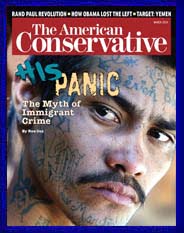 Many of the regular commenters on my webzine are zealous anti-immigrant activists, and whenever the national media focuses on the arrest of an illegal immigrant for a violent offence, they cite the case as confirming the dangers of immigrant criminality, with the Iowa rape and murder of Mollie Tibbetts a few months ago being the most recent example. However, this sort of anecdotal reasoning is entirely innumerate.
Many of the regular commenters on my webzine are zealous anti-immigrant activists, and whenever the national media focuses on the arrest of an illegal immigrant for a violent offence, they cite the case as confirming the dangers of immigrant criminality, with the Iowa rape and murder of Mollie Tibbetts a few months ago being the most recent example. However, this sort of anecdotal reasoning is entirely innumerate.
Most experts believe that there are roughly 11 million illegal immigrants in America, with some activists often claiming that the figure is far higher; meanwhile, there are over 15,000 annual homicides. Despite these huge numbers, I suspect that the number of ordinary middle-class whites killed by illegals is almost infinitesimal, probably no more than 10 per year if we exclude wives stabbing husbands and rival drug-dealers shooting each other. Energetic right-wing websites such as Breitbart and the Daily Stormer eagerly scan the news media in hopes of locating any stories of immigrant killings, and I’ve challenged those commenters to mine the archives of those publications in order to disprove my totals, but none of them have ever succeeded in doing so. Indeed, I suspect that killings of whites by illegal immigrants often generate national headlines partly because they are so exceptionally rare, and that the average white American is about as likely to be killed by lightning as murdered by an illegal. For a candidate to win the presidency based on a platform of lightning-abatement is hardly the mark of a serious country.
Ironically enough, even the details of San Francisco killing that so greatly boosted Trump’s fledgling campaign turned out to be very different than was widely imagined. Although most of Trump’s followers probably had the impression that the homicide had been committed by a hardened Latino criminal, perhaps a gang-banger driven by anti-white hatred, the facts that eventually came out at the trial were something else entirely. The culprit had been a disoriented homeless man, here illegally, who had apparently found a gun while picking through the trash. When he casually waved it around in a foolish and reckless manner, it suddenly discharged, with the bullet striking the pavement a dozen feet from where he sat, then ricocheting to fatally wound the unfortunate victim standing a hundred feet distant. Based on these unlikely circumstances, the tragedy seems much closer to being a lighting-strike than a typical street-killing.
Trump’s final pre-election remarks, claiming that he possessed the legal right to issue an Executive Order abolishing our traditional birthright citizenship provisions seemed especially ridiculous, though wildly popular within his right-wing base. Automatic U.S. citizenship for all children born here, regardless of the legal status of their parents, has been settled constitutional law for well over a century, and nearly all legal experts have held that it was guaranteed by the Fourteenth Amendment, as later confirmed by a 19th century Supreme Court ruling. In the last decade or two, a tiny handful of lawyers have claimed this policy could actually be overturned by Congressional legislation rather than Constitutional Amendment, but prior to Trump, no one had claimed the President had the ability to strip millions of Americans of their citizenship merely by Executive Tweet.
To my eye, the legal case for the Fourteenth Amendment birthright provision seems extremely strong and those who dispute it are doing so on very dubious grounds, clearly motivated for ideological reasons. But given my lack of legal training, I would raise a different point. From the late 19th century onward, many, many millions of children have been born to illegal immigrants in this country, and all of them were always considered automatic U.S. citizens, without a single person having ever disputed that matter until quite recently. It’s not that the courts ruled that the children were citizens—it’s that across a century or so, no one had even questioned the matter enough to try to bring it before a judge, nor had any politician or opinion columnist ever raised a doubt. So opponents of birthright citizenship are clearly proposing a rather astonishing legal innovation, one which certainly would have surprised several past generations of Americans.
Now admittedly, such innovations have become somewhat more common in recent American jurisprudence. For example, as far as I know, no one in the entire history of the world had ever raised the notion of Gay Marriage until just a couple of decades ago, yet we recently discovered that our Founding Fathers had fortuitously guaranteed a right to Gay Marriage in the U.S. Constitution, where it lay undetected for more than two centuries until the time was ripe. Thus, Constitutional principles are obviously far more malleable than they might once have seemed.
Still, the practicalities of Trump’s sudden legal revolution seem quite considerable. For example, over the last century legal immigration from South of the border has been fairly low while the number of Hispanic citizens has increased by well over 40 million. Thus, it seems likely that tens of millions of these Latinos ultimately derive their citizenship from those disputed birthright provisions, and presumably some millions of white and Asian citizens would also fall into that same category. Since the legal territory is so completely uncharted, perhaps Trump believes his authority in this matter is retroactive, and for a president to strip perhaps 30 million Americans of their current citizenship with a single Tweet would certainly demonstrate the awesome power of Twitter.
In many ways, the failings of the Trump Administration illustrate the difficulties of that a superpower faces when it is run by a bar-stool political philosopher guided by his personal echo-chamber.
Twenty or more years ago I would have been extremely concerned about all these racially-charged political controversies involving immigration, and throughout the 1990s such issues were my central focus. But these days, I view these loud national media battles with detachment or irritation rather than anything more serious. The main reason is the recent trajectory of California, and not merely because it is my home state.
Whites had historically been minorities in a couple of small American states such as Hawaii and New Mexico, but for most of the twentieth century gigantic California had ranked as our whitest large state. Then, within a single generation it underwent one of the greatest demographic shifts in human history, rapidly becoming one of the least white. During the 1990s California whites suddenly discovered that they had become a shrinking minority of their own state’s population, but they still remained a large super-majority of the California electorate. The resulting mismatch between population and political power was a major factor in the extremely bitter Immigration Wars of that period, about which I have written at considerable length.
Although immigration issues elsewhere were only slightly visible at that time, they totally dominated California issues, with potentially disastrous consequences. Under the wrong circumstances, our politics could have devolved into an escalating cycle of bitter hostility between two large blocs, with roughly half our population consisting of native-born whites and the other half of non-whites from a recent immigrant background. Due to factors of citizenship and age, the former would have held the overwhelming majority of political power and might have been tempted to use those considerable levers to block the rise of the latter, otherwise almost inevitable due to its demographic momentum.
Back then, California represented even a larger portion of our national population than it does today, being comparable to the combined total of Texas and New York, the next two states, and as home to Hollywood and Silicon Valley, it was the long-recognized pace-setter for the country. If such a sunny and hopeful state had suddenly become embroiled in an endless cycle of racial political conflict between whites and immigrants much like the traditional black-white divides of the Deep South, that could easily have easily set the pattern nationwide.
Some especially unfortunate social policies potentially magnified this risk. Historically, the leading source of national ethnic division has usually been along the lines of language, and California seemed especially vulnerable in this regard. Almost everywhere in the world, immigrant children are taught the national language of their new country, and this had always been the case in our own schools as well. But for totally bizarre and inexplicable reasons, America had gradually abandoned this sensible policy for Hispanic immigrants. California was the national center of this newly created system of Spanish-almost-only instruction, misnamed “bilingual education,” with up to 70% of Latino children spending at least some of their school years in those classes, and as a result often failing to properly achieve English literacy. If our country’s largest and most important state had become sharply divided along lines of ethnicity and language, a national disaster with separatist overtones might have become a realistic possibility, especially as the pattern of immigrant relations in other states began following the dominant California model.
Fortunately, despite the very serious risks this national calamity was narrowly averted, partly through the hard work of many individuals, partly through luck, and partly through the sheer political incompetence of the California Republican Party, which Gov. Pete Wilson had opportunistically positioned as the standard-bearer of the anti-immigrant cause. Although demagoguery often produces strong short-term advantages, the California Republicans instead quickly fell into a sharp decline that has continued almost unabated to the present day, with California soon becoming a one-party Democratic state.
California’s transformed political landscape may be illustrated by a single example. In late 1994, I was a top featured speaker at a 70,000 person anti-Prop. 187 rally held in Los Angeles, the largest pro-immigrant protest in American history. The event had been organized by a local immigrant rights activist named Juan Jose Guttierez and his young Latino assistant then just a couple of years out of college, while apparently receiving little support from any of the state’s rather timorous Hispanic elected officials.
A few years later, that young assistant, Kevin de Leon, went into politics himself. Gradually rising through the ranks, he most recently served as President of the State Senate and this November received over 45% of the vote in his unsuccessful challenge to 85-year-old incumbent Sen. Dianne Feinstein, who had held public office almost longer than her challenger had been alive. As I’ve sometimes joked with journalists over the years, De Leon seems to have done much better politically over the last 25 years than either Gov. Wilson or the California Republican Party.
Partly because the California Republicans failed so quickly in their political attempt to capitalize upon anti-immigration sentiment, almost no lasting damage was done to relations between whites and non-white immigrants, which soon returned to the quite amicable state the two groups had previously enjoyed. Indeed, within a decade anti-immigrant sentiments had faded to insignificant levels even within the overwhelmingly white and conservative Republican rump party, let alone the heavily non-white Democrats. A few years ago, I discussed this fortunate political outcome at great length.
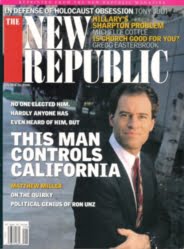 One important factor assisting this rapid ethnic reconciliation was my own successful 1998 campaign to dismantle the failed “bilingual education” system by ballot initiative. My measure required that all young children be taught English in the public schools, and it passed in a huge landslide despite being publicly opposed by nearly every established political element in the state and massively outspent on advertising. Although for obvious reasons, almost all immigrant families had always wanted their children taught English, many deeply suspicious whites had long remained unaware of this, instead fearing that Hispanics preferred Spanish-language schools. But once the huge media coverage surrounding the initiative drove home the true facts, many sources of tension between immigrants and the native-born faded away. I think the ultimate outcome for California society is best illustrated by an amusing AT&T radio advertisement that ran across the state a couple of years ago.
One important factor assisting this rapid ethnic reconciliation was my own successful 1998 campaign to dismantle the failed “bilingual education” system by ballot initiative. My measure required that all young children be taught English in the public schools, and it passed in a huge landslide despite being publicly opposed by nearly every established political element in the state and massively outspent on advertising. Although for obvious reasons, almost all immigrant families had always wanted their children taught English, many deeply suspicious whites had long remained unaware of this, instead fearing that Hispanics preferred Spanish-language schools. But once the huge media coverage surrounding the initiative drove home the true facts, many sources of tension between immigrants and the native-born faded away. I think the ultimate outcome for California society is best illustrated by an amusing AT&T radio advertisement that ran across the state a couple of years ago.
Since California had always been the center of America’s bilingual education movement, the elimination of those programs set them on the road to oblivion elsewhere as well, especially once the New York Times, the New Republic, and the rest of the mainstream media documented the tremendous success of these educational reforms and the strong support they attracted within the immigrant community.
For decades, those disastrous bilingual programs had greatly impacted the education of many millions of Hispanic students, looming very large on the national political stage, but their collapse and disappearance was so rapid and complete that I suspect few younger Americans today are even aware that they had ever existed. I’m also unsure whether the younger generation of immigrant Californians are more than vaguely aware of the ferocious political battles that roiled the state throughout the 1990s.
Since such a substantial fraction of America’s Hispanic and immigrant populations reside in California, their excellent relations with their fellow white and native-born Americans serves as a very positive model for the rest of the country. Trump had made immigration concerns a central element of his 2016 campaign, but that theme fell totally flat in America’s most heavily immigrant state, with white Californians supporting Trump at a rate 20-25 points lower than whites in the rest of the country. Indeed, if the entire white national electorate had voted like its Golden State counterpart, Trump would have lost all fifty states, mostly by huge landslides, suffering by far the greatest electoral disaster in American history. All the Trump-hating pundits would have spent Election Night laughing and saying “I told you so!”
These California sentiments hardly seem unique. Texas is our second largest state and has been following a demographic trajectory similar to that of California, with whites having fallen into minority status, soon to be passed by a rapidly growing Hispanic population. But although Texas is as strongly conservative as California is liberal, whites and Hispanics seem to get along just as well, and the enthusiastic support of the latter for O’Rourke against his Spanish-surnamed opponent hardly suggests any deep ethnic chauvinism. Florida, New York, and Illinois also contain very large concentrations of Hispanics and immigrants, who once again apparently enjoy quite good relations with their white neighbors. With such a large fraction of our immigrant population living in states displaying such negligible levels of nativist rancor, the likelihood that today’s immigration controversy at the national level will produce any long-lasting negative consequences seems very low to me.
Most observers would agree that for many years America’s highest-ranking political figure of fervent anti-immigration sentiments has been Jeff Sessions of Alabama, first as a senator and more recently as Trump’s Attorney-General. But few seem to have noted the oddity that Sessions has lived his entire life in a state containing just a sliver of immigrants or Hispanics, strongly suggesting that his entire knowledge of that complex subject comes from secondary sources, perhaps those having a sharp ideological bias. Would we really tend to trust the expertise of a political leader from lily-white Vermont when it came to sorting out the difficult black-white relations of a Deep South state such as Mississippi?
A few months ago someone pointed me to a lengthy piece in the Sunday New York Times by Richard Kahlenberg, a moderate liberal who has spent the last twenty years at the Century Foundation. Kahlenberg argued that bridging our country’s enormously deep ethnic and ideological divide desperately required a Robert Kennedy-type figure, who had demonstrated a remarkable unifying ability a half-century ago before his presidential campaign was tragically cut short by an assassin’s bullet. But although I liked the piece, I pointed out that California’s political situation was quite different, having absolutely no political divide that required any bridging. Our state’s politics had become extremely bland and boring, and I cited a good article describing the heated race for state Attorney General, in which the angry charges and counter-charges were so dull and perfunctory that one’s eyes would glaze over.
In the last couple of years, American society has been experiencing a long series of bizarre Chinese Cultural Revolution-style protests against long-honored figures of our past, now denounced as “racist symbols,” with buildings renamed and leftist mobs attacking public statues. Although monuments associated with the Confederacy have been the primary targets, these attacks have often extended outside the South and even former presidents such as Woodrow Wilson, Thomas Jefferson, Abraham Lincoln, and William McKinley have sometimes become targets, along with the author of the Star-Spangled Banner and the founder of modern gynecology. As an extreme example, the losing black gubernatorial candidate in Georgia had called for the Isis-like destruction of the gigantic Stone Mountain Memorial, a national monument featured on a 1970 U.S. postage stamp.
Ultra-liberal California has hardly been free of such copy-cat protests, with a handful of obscure memorials to Robert E. Lee or other Confederate figures targeted and removed, along with a statue or two honoring Christopher Columbus. In Palo Alto, a zealously-PC Swedish immigrant launched a successful campaign to rename two of Palo Alto’s middle schools because they honored top academic figures of a century ago known to have advocated eugenics, even though exactly similar charges could be leveled against most other prominent American intellectuals of that same era.
But although California was seized from Mexico during a controversial 19th century war, there have been absolutely no reports of any protests aimed at the various statues and monuments honoring the leaders associated with that military action or the state’s subsequent American leadership. Ironically enough, several high-profile controversies have instead targeted symbols of California’s Mexican past, especially Father Junipero Serra, the recently-sainted founder of Spanish California. Denounced by leftists for his alleged cruelty to the Indians, Serra has had his name removed from various Stanford University buildings. Meanwhile, California’s numerous and prominent Hispanic officials would surely ridicule and condemn any such similar attacks against the state’s past Anglo-Saxon heritage.
In recent years, despondent white activists have sometimes bemoaned that America’s racial transformation has become irreversible and that our once overwhelmingly white country is inevitably headed for a Brazilian future, with the enormous crime, corruption, and political disorder that such a society entails. But I am very skeptical of these claims. Over the last half-century, California’s white European population has fallen from almost 85% of the total down to little more than 30%, far below that of Brazil, yet none of those terrible social ills seem anywhere to be found. Our ultra-liberal state legislature recently banned plastic straws for environmental reasons, but such nonsense seems more typical of Burlington, VT than the bloody favela politics of the Sao Paolo ghettos.
One widespread problem is that most of us draw our knowledge of the outside world from the media, and the picture of reality imparted by the conservative commentators of FoxNews is usually just as distorted and unrealistic as that of their liberal mainstream media counterparts. Back in January, the legislature established California as a “sanctuary state,” enacting various laws to shield illegal immigrants from threat of federal deportation. President Trump immediately denounced this policy in the strongest possible terms, warning that the horrifying levels of resulting immigrant crime would surely bring the state to its knees. But when a Hannity correspondent interviewed local Californians about that supposedly very controversial new policy, she was chagrined to discover that nearly all of them casually supported it.
More recently, the Sacramento Bee ran a rather amusing political cartoon that seems to correctly describe the divergence between actual life in California and how matters are portrayed on FoxNews.
Obviously, those ideologically committed to a different perspective will treat my claims with extreme skepticism. But they should carefully consider some supporting evidence.
Consider that blogger Steve Sailer is a California native who moved back to live in his hometown of Los Angeles around twenty years ago. While he was growing up, that city was among the whitest in America, but for the last couple of decades the population has been half Hispanic, with white Europeans probably constituting no more than 20% of the total. Racially- or ideologically-charged topics are his primary focus, especially those connected with politics. But although his posts regularly deal with all sorts of national controversies, in recent years he has only very rarely written anything about Los Angeles politics or California issues in general. Indeed, someone reading his blog over the last decade would have remained almost entirely unaware of the many hard-fought state and city election campaigns that had spent so many hundreds of millions dollars on advertising that blankets the airwaves all around his own home. The obvious reason for his remarkable silence is that nearly all those political candidates and campaigns were so bland and boring that there was almost never anything interesting to say about them. These days, Los Angeles is just not a very “exciting” city to live in or write about. By contrast, Brazil is an extremely “exciting” country, and if he were living there, his blog would surely be overwhelmed with local stories.
Oddly enough, both Los Angeles and California had experienced far more such negative “excitement” decades ago, when both were still overwhelmingly white. Although Southern California had widely been considered a true American paradise in the 1950s and early 1960s, several tumultuous decades soon followed, encompassing the Watts Riots, the two hundred or so racial Zebra killings in San Francisco and statewide, the Manson murders, the Black Panthers, the Symbionese Liberation Army, the extremely high urban crime rates from the 1980s onward, the LA Riots, and the bitter racial turmoil of the 1990s. Throughout most of the second half of the twentieth century, our state was notorious for its bizarre and often dangerous politics, with the 1978 killing of a San Francisco-area Congressman in the huge Jonestown Massacre followed just a week later by the assassination of the mayor of that same city at the hands of a conservative former supervisor. Yet as whites became a much smaller share of the population, all this turmoil and controversy seemed to fade away, a trend exactly contrary to what fearful white activists might have normally predicted.
Admittedly, many of the examples mentioned above, such as the deadly urban riots and the Zebra killings, were directly associated with the state’s black population. But California had always had by far the smallest black population of any large state, and that fraction has dropped by less than a percentage point in the last fifty years. So black demographic changes cannot be responsible. However, today 60% of the state population is neither black nor white, and perhaps this majority has had a salutary buffering effect on the local version of America’s eternal black-white racial conflict.
California still has very serious long-term problems far beyond the deadly wildfires currently ravaging portions of the state, but few of these seem related to bitter racial or ideological conflicts. Probably the leading concern is the extremely high cost of housing, and once these huge living expenses are properly considered, the state’s resulting poverty rate is among the worst in the country. The post-Cold War era of the early 1990s saw the disappearance of Southern California’s huge aerospace industry, which had traditionally been the largest source of well-paying middle class jobs, and although the current Tech Boom—or perhaps Tech Bubble—has created enormous wealth, nearly all of that has been concentrated within a sliver of the population, giving California one of America’s most unequal income distributions. Some of these poverty problems are being gradually alleviated by the 2015 enactment of a huge rise in the statewide Minimum Wage, which will reach $15 per hour by 2023, a political movement that I’m proud to have substantially fostered, but the impact is a gradual one.
It seems undeniable that most of these major California problems are closely connected to the doubling of the state’s population since the late 1960s, and nearly all of that huge increase was due to very heavy foreign immigration. Such rapid population growth naturally benefits Capital at the expense of Labor, so the resulting changes have both raised housing costs and lowered worker wages. There has also been a sharp reduction in the quality of life as more and more residents have been pushed out into the less desirable portions of the state, such as the smoggy Inland Empire of Riverside and San Bernardino counties, which often require horrific traffic commutes to Los Angeles area jobs. Even the recent spate of wildfires may not be entirely unconnected since suburban growth puts more areas at risk and state water problems have been exacerbated by increased consumption. But most of these same problems would have occurred if the many millions of newcomers had been white rather than Hispanic or Asian.
The affluent and extremely pleasant California lifestyle of the post-war era was widely recognized across America, and that magnetic lure produced the early stages of the state’s very rapid population growth. But more recently, the ill effects of congested traffic, terrible housing options, and stiff job competition at the lower end had greatly reduced state’s attractions. Growth has sharply fallen, though this is partly because continuing inflows of immigrants have been partially matched by a simultaneous outflow of existing residents.
Obviously, at some point a combination of severe overcrowding, unaffordable housing, and general worker impoverishment will sufficiently reduce the attractions of our society that the continuing inflow of immigrants will fall to merely a trickle. But this hardly seems the most desirable solution to our problems, whether in California or in other states moving along the same trajectory. Meanwhile, our deadlocked Congress has failed to enact any significant immigration legislation in 28 years, and the extremely rancorous relations between the Trump White House and newly Democratic House hardly suggest that anything will soon change. As a consequence, both Trump and Obama have been forced to issue Executive Orders of an extremely dubious legal nature, whether granting temporary protected status to illegal immigrant “Dreamers” or now promising to automatically reject all refugee claims along our Southern border. The gap between pro- and anti-immigration forces seems absolutely unbridgeable and likely to continue indefinitely, even though both sides remain extremely dissatisfied with the status quo.
However, as I argued a couple of years ago, the widespread belief that our immigration problems are insoluble is based on a very serious misunderstanding of the contending elements involved. Both the media and the political participants regard the conflict as being waged between two sides, but that is mistaken. There are actually three political factions: pro-immigrant Democrats, pro-immigration Republicans, and anti-immigration Republicans. All the unsuccessful Congressional efforts of the last couple of decades involved an alliance of the first two groups failing to overcome the opposition of the third, and with Trump having enormously increased the power of that last faction, there is no prospect for any change in that situation.
But careful consideration will reveal that the major goals of the first and third groups—pro-immigrant Democrats and anti-immigration Republicans—are actually not directly in conflict, and if they formed a political alliance, they could easily formulate legislation acceptable to both that might stand have an excellent chance of passing both houses of Congress and being signed into law by the President. Although I published my analysis of this solution several weeks before Trump’s upset 2016 victory, I think that it is just as correct and relevant today, and perhaps even more so given that November election results have produced a divided Congress, closing the door on other options.

